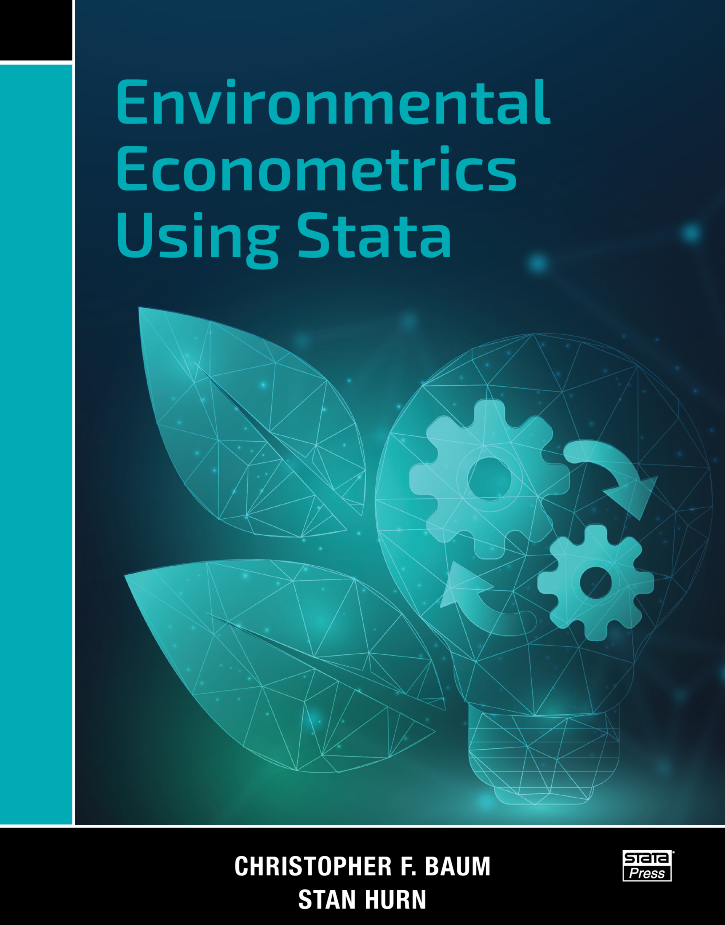
Environmental Econometrics Using Stata |
||||||||||||||||||||||||||||||||||||||||
 Click to enlarge See the back cover |
$68.00 Print Buy now$58.00 VitalSource Buy now$54.00 Amazon Kindle Buy from Amazon
As an Amazon Associate, StataCorp earns a small referral credit from
qualifying purchases made from affiliate links on our site.
|
Author index Subject index Errata Download the datasets used in this book Review from the Stata Journal
|
||||||||||||||||||||||||||||||||||||||
Comment from the Stata technical groupEnvironmental Econometrics Using Stata is written for applied researchers that want to understand the basic theory of modern statistical methods and how to use them. It is also perfectly suited for teaching. Each chapter is motivated with real data and ends with a set of exercises. The book is also inherently interdisciplinary. The questions posed by environmental issues are relevant to researchers in the physical sciences, economics, sociology, political science, and public health, among other fields. Each chapter begins with a real dataset and research question. The authors then provide an introduction to the statistical method and demonstrate how to use it to answer the research question. The authors discuss the assumptions about the data and the model, demonstrate the Stata commands used to fit the model and check the model assumptions, and interpret the results. The workflow of the book mimics the workflow that would be required to present your results to an academic audience. The book is of interest not only for its exposition of the topics but also for its breadth. The book presents estimators for continuous, binary, and ordered outcomes in cross-sectional data; univariate and multivariate time series with stationary and nonstationary data; linear and dynamic panel data; and spatial models and fractional integration. The range of methods is not arbitrary; it is a function of the questions posed by environmental data and reflects the challenges faced by researchers from different disciplines to answer a wide range of questions using modern statistical methods. |
||||||||||||||||||||||||||||||||||||||||
About the authorsChristopher F. Baum is a professor of economics and social work at Boston College. Baum has taught econometrics for many years, using Stata extensively in academic and nonacademic settings. He has over 40 years of experience with computer programming and has authored or coauthored several widely used Stata commands. He is the author of An Introduction to Modern Econometrics Using Stata and An Introduction to Stata Programming, Second Edition. He is an associate editor of the Stata Journal and maintains the Statistical Software Components Archive of community-contributed Stata materials. Stan Hurn is a professor of econometrics at Queensland University of Technology. He held previous positions at the University of Glasgow and at Brasenose College, Oxford. He is a fellow of the Society for Financial Econometrics. His main research interests are in the field of time-series econometrics, and he has been published widely in leading international journals. He is also the coauthor of Econometric Modelling with Time Series: Specification, Estimation and Testing and Financial Econometric Modeling. |
||||||||||||||||||||||||||||||||||||||||
Table of contentsView table of contents >> |
||||||||||||||||||||||||||||||||||||||||